Neottia nidus-avis - Bird's-nest Orchid
Phylum: Magnoliophyta - Class: Liliopsida - Order: Orchidales - Family: Orchidaceae
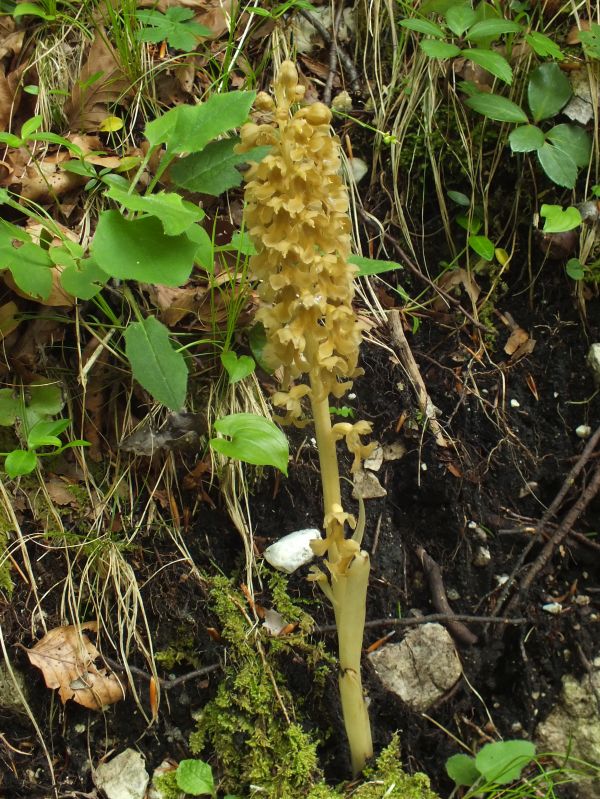
Description
The name Bird's-nest Orchid refers to the tangled root system of the plant which is said to resemble a badly-made bird's nest. The plant is entirely lacking in chlorophyll (green pigment) which means that, unlike green plants, it is unable to make (photosynthesise) food from sunlight. It is entirely dependent for nutrients to germinate and grow on a host mycorrhizal fungus in the soil which is, in turn, dependent upon attachments to the trees in the woodland. Since all parties involved in this relationship survive it is clearly of mutual benefit. The resulting drab brownish-beige colour of the entire orchid plant often makes it difficult to locate in the dark, wooded habitats where it lives.
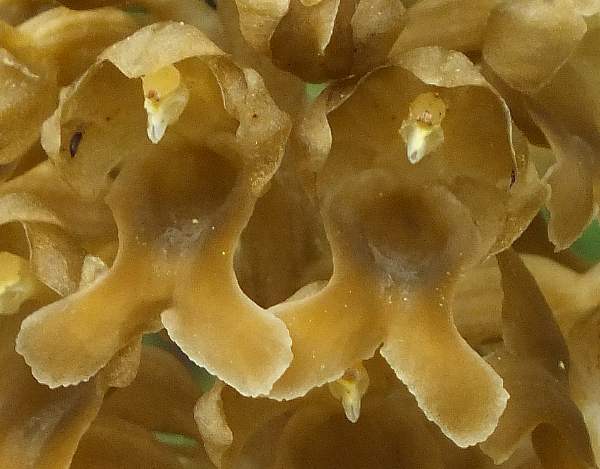
The orchids grow to a height of around 40cm, and when they emerge from the soil in springtime, the flower buds are fully formed and tightly sheathed in bracts which gradually release as the flower spikes grow.
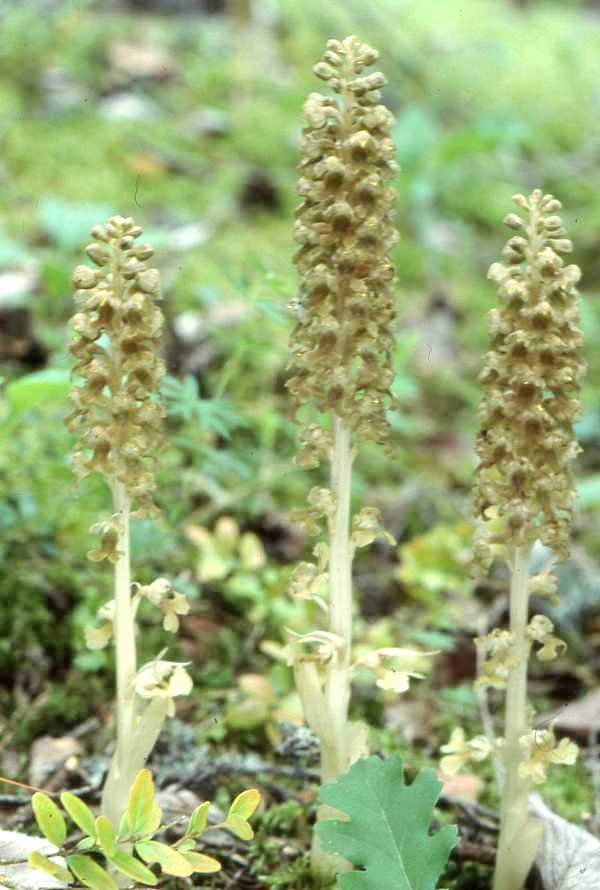
Distribution
Bird's-nest Orchid is in steep decline due to loss of suitable deciduous woodland habitat which has either been eradicated altogether or converted to faster-growing cash-crop conifer woodlands. In areas where thousands of plants were once recorded only a few now remain.
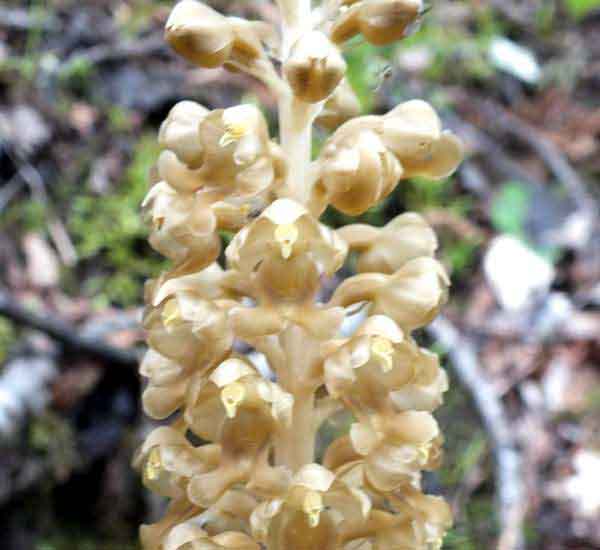
Its world range extends into Northern and Central Europe and further south towards the Mediterranean where it is largely confined to to mountain woodlands and forests. In Slovenia at the right time of year, these orchids appear in thousands. Not only are they inside woodland, they spill out on to roadside verges in huge clumps of flowers. No doubt, they occur in similar numbers in other Central European countries, too.
Habitat
This orchid occurs in deep leaf litter in dark woodland habitats, and also in open woodland rides.
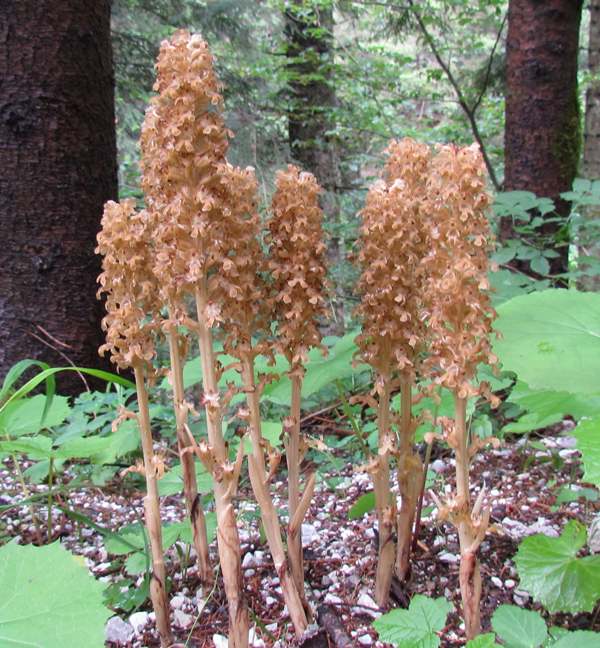
The specimens shown on this page were found under lime trees in west Wales in early May (top), and in Beech woods in the Lot Valley in France in late April.
Flowering times
In the UK and Ireland Bird's-nest Orchids usually flower from early May to late June.
Hybrids and Varieties
There are no recorded subspecies or hybrids, and only one variety:
Neottia nidus-avis var. pallida is rare; it has a pale yellow-to-white stem, paler flowers and white pollinia.
Etymology
The genus name Neottia means 'nest',a reference to the tangled root structure of orchids in this genus. The specific epithet nidus-avis means 'bird's nest', rather making the genus name superfluous!
Reference sources
The Plant List
Sue Parker (2023) Wild Orchids of Wales - how, when and where to find them; First Nature e-book (Amazon Kindle format)
Anne and Simon Harrap (2005) Orchids of Britain and Ireland; A&C Black
Pierre Delforge (2005) Orchids of Europe, North Africa and the Middle East; A&C Black
Den Nordiska Floran (1992) Bo Mossberg, Stefan Ericsson and Lennart Stenberg; Wahlstrom & Widstrand
Please Help Us: If you have found this information interesting and useful, please consider helping to keep First Nature online by making a small donation towards the web hosting and internet costs.
Any donations over and above the essential running costs will help support the conservation work of Plantlife, the Rivers Trust and charitable botanic gardens - as do author royalties and publisher proceeds from books by Pat and Sue.


